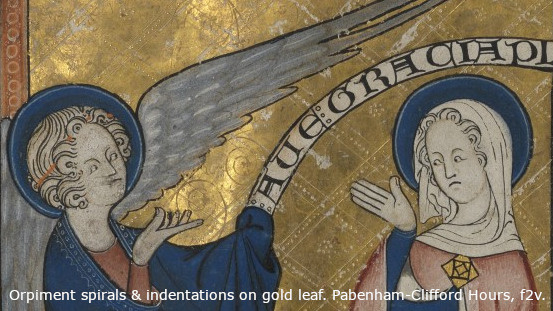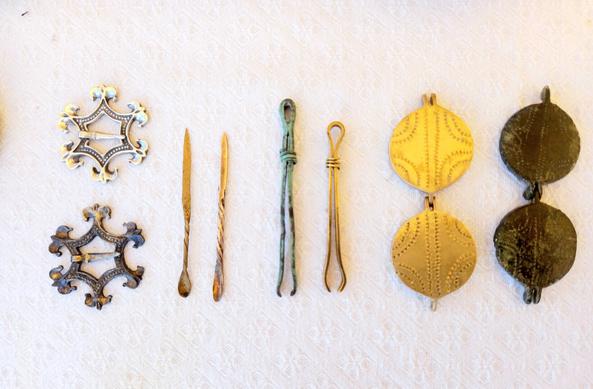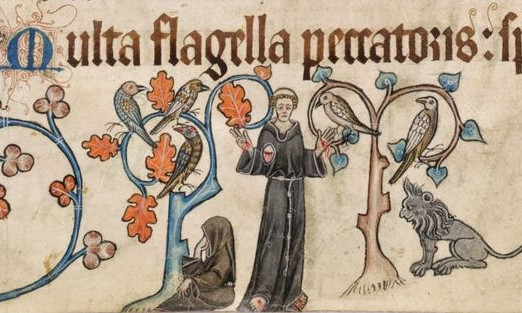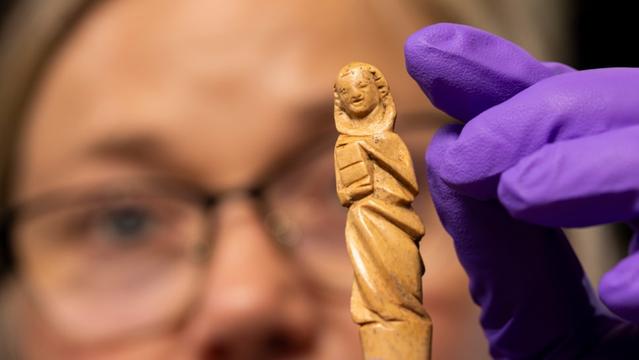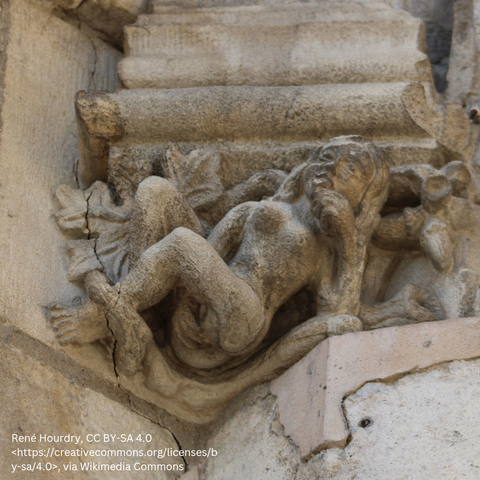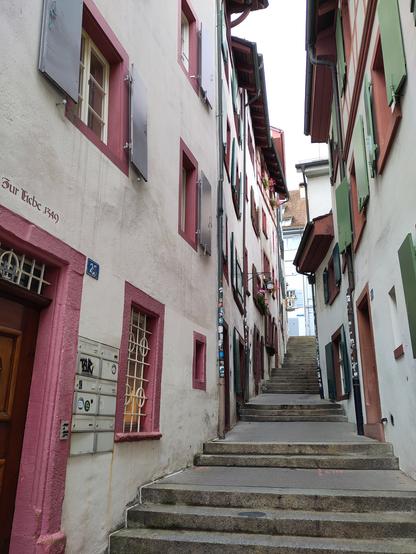14 Holy Helpers
In German: Vierzehn Nothelfer. In Latin: Quattuordecim auxiliatores.
These are a group of saints venerated together by Catholics because their intercession is believed to be particularly effective. Especially against various diseases.
This group of Nothelfer (“helpers in need”) started in the 14th century as the first in the Rhineland. Largely as a result of the epidemic (probably of bubonic plague) that became known as the Black Death.
Devotion to the 14 Holy Helpers began in Rhineland (now a part of Germany) in the time of the Black Death. Among the 14 were 3 virgin martyrs. There’s a German mnemonic device to remember the 3 virgins. Their names are: Margaret, Barbara, & Catherine. 13 of the 14 were accounted martyrs (Giles is the exception).
While each has a separate feast day, the 14 Holy Helpers, in some places, are celebrated as a group on August 8th. But the celebration never became part of the General Roman Calendar. When that calendar was revised in 1969, the individual celebrations of St. Barbara, St. Catherine of Alexandria, St. Christopher, & St. Margaret of Antioch were dropped.
The individual celebrations of all 14 are included in the General Roman Calendar in 1954, the General Roman Calendar of Pope Pius XII & the General Roman Calendar of 1960.
The 14 saints are:
- Agathius/Acacius – Feast day: May 7. Patron against headaches.
- Barbara – Feast day: December 4. Patron against fever & sudden death, against lightning & fire, against sudden & violent death at work, & patron of builders, artillerymen, & miners.
- Blaise/Blase/Blasius – Feast day: February 3. Patron against illnesses of the throat & for protection of domestic animals.
- Catherine of Alexandria – Feast day: November 25. Patron against sudden death & diseases of the tongue, philosophers, theologians, maidens, female students, preachers, the dying, wheelwrights, mechanics, potters, & other artisans who work with wheels, invoked by students, orators, preachers, & lawyers for wise counsel & for eloquence.
- Christopher/Christophorus – Feast day: July 25. Patron against bubonic plague & dangers while traveling.
- Cyriacus – Feast day: August 8. Patron against temptation on the death-bed, diseases of the eye, & demonic possession.
- Denis/Dionysius – Feast day: October 9. Patron against headache & against demonic possession.
- Erasmus/Elmo – Feast day: June 2. Patron against intestinal ailments, for domestic animals, & sailors.
- Eustace/Eustachius/Eustathuis – Feast day: September 20. Patron against family discord, against fire (temporal & eternal), & the patron of hunters, trappers, & anyone facing trouble.
- George/Georgius – Feast day: April 23. Patron for the health of domestic animals, against herpetic diseases, & the patron of soldiers.
- Giles/Aegidius – Feast day: September 1. Patron against plague, mental illness, & nightmares, for a good confession, & patron of the disabled, beggars, blacksmiths, & breast-feeding moms.
- Margaret of Antioch – Feast day: July 17. Patron of women in childbirth, invoked against backache, & invoked for escape from devils.
- Pantaleon/Panteleimon – Feast day: July 27. Patron of physicians & midwives, invoked for the protection of domestic animals, & invoked against cancer & tuberculosis.
- Vitus/Guy – Feast day: June 15. Patron against epilepsy, lightening, the bites of animals (especially those who were venomous or rabid), storms, & for protection of domestic animals.
Half of the saints are seen as actual historic figures (Blaise, Cyriacus, Erasmus, George, Giles, Pantaleon, & Vitus). While the others may be only legends. While the feasts of several of the 14 Holy Helpers were taken off the General Roman Calendar. None were decanonized, or denied to exist & their feasts are still on certain calendars.
One or another in the original set are sometimes substituted with: Anthony the Anchorite, Leonard of Noblac, Nicolas, Sebastian, Oswald the King, Pope Sixtus II, Apollonia, Dorothea of Caesarea, Wolfgang of Regensburg, or Roch. In France, an “extra” helper is added: the Virgin Mary.
The 14 Holy Helpers are honored in Bavaria as the vierzehn Heiligen. This literally translates to “14 Holy Helpers.”
The Basilica of the Vierzehnheiligen is dedicated to these auxiliary saints. It was built between 1743 & 1772 (29 years).
Devotion to these saints begin in this region on September 24, 1445 when Hermann Leicht, a young shepherd of a nearby Franciscan monastery, saw a crying kid in a field belonging to the nearby Cistercian monastery of Langheim.
As he bent down to pick up the kid, it suddenly vanished. A short time later, the kid reappeared at the same spot. This time, 2 candles were burning next to it.
In June 1446, Leicht saw the kid a 3rd time. This time, the kid wore a red cross on its chest & was accompanied by 13 other kids. The kid said: “We are the 14 helpers & wish to erect a chapel here, where we can rest. If you will be our servant, we will be yours!”
Shortly after, Leicht saw 2 burning candles descending to this spot. It’s alleged that miraculous healings soon began, through the intervention of the 14 saints.
The Cistercian brothers to whom the land belonged erected a chapel, which immediately attracted pilgrims. An altar was consecrated as early as 1448. Pilgrimages to the Vierzehnheiligen continue to the present day between May & October.
One-Time Monthly YearlyMake a one-time donation
Make a monthly donation
Make a yearly donation
Choose an amount
$1.00 $5.00 $10.00 $1.00 $5.00 $10.00 $5.00 $10.00 $15.00Or enter a custom amount
$Your contribution is appreciated.
Your contribution is appreciated.
Your contribution is appreciated.
DonateDonate monthlyDonate yearly
#14HolyHelpers #14thCentury #1743 #1772 #1954 #1960 #1969 #24September1445 #Acacius #Aegidius #Agathius #AnthonyTheAnchorite #Apollonia #April23 #August8 #Barbara #BasilicaOfTheVierzehnheiligen #Bavaria #BlackDeath #Blaise #Blase #Blasius #BubonicPlague #CatherineOfAlexandria #Chapel #Christopher #Christophorus #Cistercian #Cyriacus #December4 #Denis #Dionysius #DorotheaOfCaesarea #Elmo #Eustace #Eustachius #Eustathius #February3 #France #Franciscan #GeneralRomanCalendar #George #Georgius #German #Germany #Giles #Guy #HermannLeicht #July25 #July27 #June1446 #June15 #June2 #Langheim #Latin #LeonardOfNoblac #MargaretOfAntioch #May #May7 #Nicolas #Nothelfer #November25 #October #October9 #OswaldTheKing #Pantaleon #Panteleimon #Pilgrims #PopePiusXII #PopeSixtusII #Rhineland #Roch #Saints #Sebastian #September1 #September20 #VierzehnHeiligen #VierzehnNothelfer #VirginMary #Virgins #Vitus #WolfgangOfRegensburg

